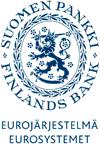 Research Discussion Papers, Bank of Finland
Research Discussion Papers, Bank of Finland
No 5/2005:
Why do capital intensive companies pay higher wages?
Matti Virén ()
Abstract: An obvious answer to this question is the capital-skill
complementarity hypothesis originally proposed by Zwi Griliches (1969). But
the relatively poor performance of this hypothesis suggests that other
explanations are needed. Here we consider the labour union behaviour in the
wage bargaining process as such an alternative. The explanation is based on
the observation that capital intensive companies are more vulnerable to
strike threats and may thus more easily give in for union wage demand.
Thus, the bargaining power of unions is related to the capital-labour
ratio. This paper provides some tests for these hypotheses with panel data
for Finnish companies. The results give support to the wage bargaining
hypothesis.
Keywords: wages; bargaining; wage distribution; panel data; (follow links to similar papers)
JEL-Codes: J31; J51; (follow links to similar papers)
27 pages, February 13, 2005
Before downloading any of the electronic versions below
you should read our statement on
copyright.
Download GhostScript
for viewing Postscript files and the
Acrobat Reader for viewing and printing pdf files.
Full text versions of the paper:
0505netti.pdf 
Download Statistics
Questions (including download problems) about the papers in this series should be directed to Minna Nyman ()
Report other problems with accessing this service to Sune Karlsson ()
or Helena Lundin ().
Programing by
Design by Joachim Ekebom
 Research Discussion Papers, Bank of Finland
Research Discussion Papers, Bank of Finland
 Research Discussion Papers, Bank of Finland
Research Discussion Papers, Bank of Finland